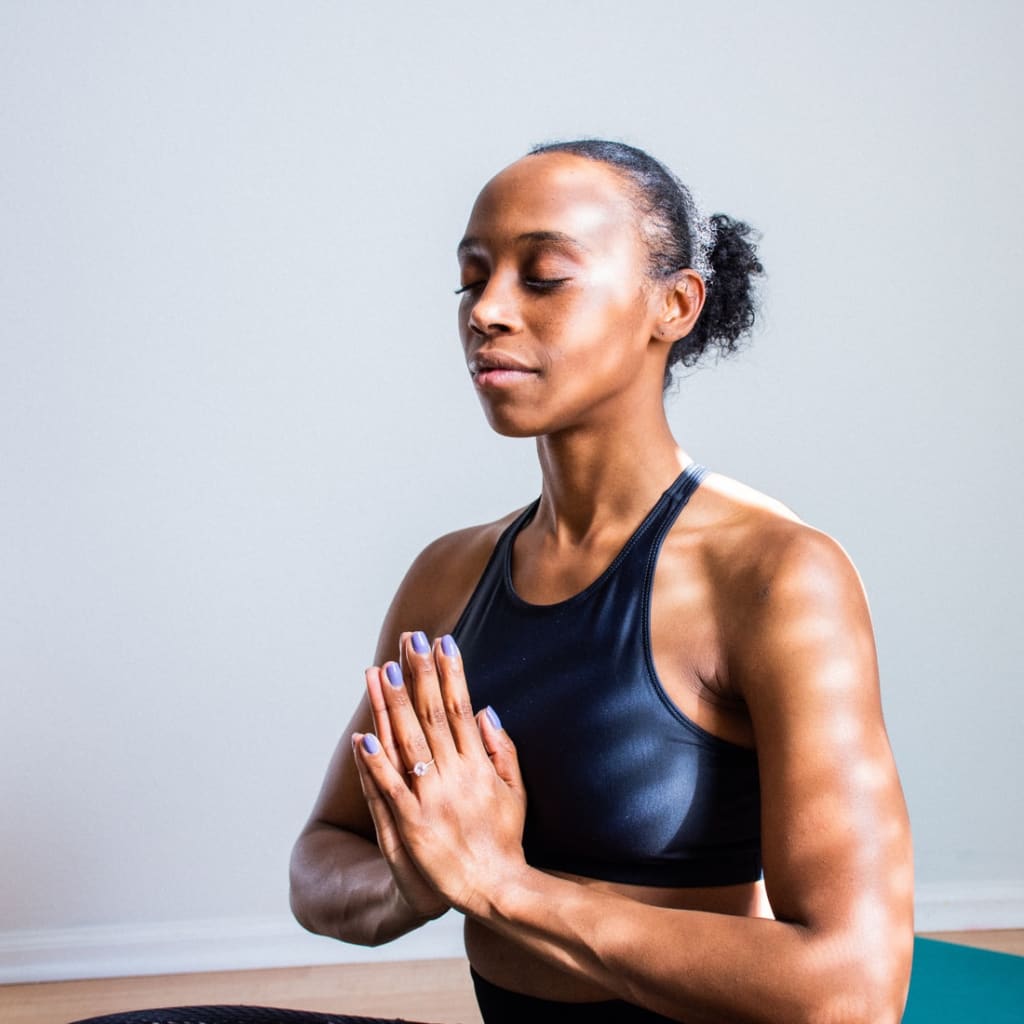How to Meditate
story tips on how to meditate

Meditation is a simple practice available to all, which can reduce stress, increase calmness and clarity and promote happiness. Learning how to meditate is straightforward, and the benefits can come quickly. Here, we offer basic tips to get you started on a path toward greater equanimity, acceptance and joy. Take a deep breath, and get ready to relax.
Meditation Exercises
Find a comfortable spot and get ready to relax.
The Basics
Setting aside time for formal meditation is an important way to establish a routine and get comfortable with the practice. Even just a few minutes a day can make a big difference.
“Some people complain about taking time out of their day,” said Atman Smith, who teaches meditation to underserved communities in Baltimore. “Practice is important though. It’s a tool you can use to bring yourself back to the present in stressful situations.”
But we shouldn’t stop being mindful when we stop meditating. “The purpose of mindfulness meditation is to become mindful throughout all parts of our life, so that we’re awake, present and openhearted in everything we do,” said Tara Brach, a popular meditation teacher based near Washington, D.C. “Not just when we’re sitting on the cushion.”
Mindfulness meditation isn’t about letting your thoughts wander. But it isn’t about trying to empty your mind, either. Instead, the practice involves paying close attention to the present moment — especially our own thoughts, emotions and sensations — whatever it is that’s happening.
In addition to basic meditation instructions, we’ve compiled guided meditations for a few popular exercises including the body scan, walking meditation and mindful eating. “Each of the applied mindfulness practices brings alive an experience that might otherwise be more automatic,” said Ms. Brach.
Though meditating on your own is an essential part of a complete practice, the steady guidance of an experienced teacher can be invaluable, especially as you’re getting started. Our minds wander so easily, and the clear instructions of a teacher can help bring us back to the present moment. When the Mind Wanders
It’s inevitable: During meditation, your mind will roam. You may notice other sensations in the body, things happening around you, or just get lost in thought, daydreaming about the past or present, possibly judging yourself or others.
There’s nothing wrong with this — thinking is just as natural as breathing. “It’s the natural conditioning of the mind to wander,” said Ms. Brach.
When this happens, simply notice what it is you were thinking about or what was distracting you, then take a moment and pause.
You don’t need to pull your attention right back to the breath. Instead, let go of whatever it was you were thinking about, reopen your attention, then gently return your awareness to the breath, being present for each inhalation and exhalation.
“Don’t just drag the mind back to the breath,” said Ms. Brach. “Instead reopen the attention, then gently come and land again.”
After a few breaths, invariably, the mind will wander again. Don’t beat yourself up about this. It’s natural. What’s important is how we respond when it happens. Simply acknowledge whatever it is you were thinking of — without ascribing too much judgment to it, without letting it carry you away — and take a moment to come back to the present, and resume your meditation.
“Where we build our skill is in the practice of coming back,” said Ms. Brach. “Coming back again and again. Notice it — thinking — and then pause, and then come back to the present moment.”
Mindfulness Meditation Practices
You can practice mindfulness meditation on your own anytime and anywhere. But listening to basic guided meditations can also be helpful, especially when getting started. Instructions from an experienced teacher can help remind us to come back to the present moment, let go of distracting thoughts and not be so hard on ourselves.
Here are four guided meditations you can listen to that will help you remain in the present moment. Choose the one that’s the right length for you: One minute is a great place to start but also good if you simply don’t have a lot of time. If you’re more experienced or ready for an extended mindfulness session, try the 10- or 15-minute sessions. You can download these tracks and listen to them when you’re ready to meditate. When the Mind Wanders
It’s inevitable: During meditation, your mind will roam. You may notice other sensations in the body, things happening around you, or just get lost in thought, daydreaming about the past or present, possibly judging yourself or others.
There’s nothing wrong with this — thinking is just as natural as breathing. “It’s the natural conditioning of the mind to wander,” said Ms. Brach.
When this happens, simply notice what it is you were thinking about or what was distracting you, then take a moment and pause.
You don’t need to pull your attention right back to the breath. Instead, let go of whatever it was you were thinking about, reopen your attention, then gently return your awareness to the breath, being present for each inhalation and exhalation.
“Don’t just drag the mind back to the breath,” said Ms. Brach. “Instead reopen the attention, then gently come and land again.”
After a few breaths, invariably, the mind will wander again. Don’t beat yourself up about this. It’s natural. What’s important is how we respond when it happens. Simply acknowledge whatever it is you were thinking of — without ascribing too much judgment to it, without letting it carry you away — and take a moment to come back to the present, and resume your meditation.
“Where we build our skill is in the practice of coming back,” said Ms. Brach. “Coming back again and again. Notice it — thinking — and then pause, and then come back to the present moment.”
Body Scan
Instead of training your attention on the breath, as is the case in basic mindfulness meditation, the body scan involves systematically focusing on different sensations and areas, from the head to the toes. Start at the top of your head. Slowly and deliberately, bring your attention to the surface of your skin, one inch at a time. See if you can feel your scalp, your ears, your eyelids and your nose. Continue in this manner, moving across the face, over the ears, down the neck and shoulders and all the way down to your toes.
At first, it might seem as if you don’t feel anything at all. But as you progress, you might begin to notice a whole world of new sensations. Some of the feelings might be pleasant, a gentle warmth, a comfortable weight. Some feelings might be neutral — tingling or itching. And some might be unpleasant. Your feet might feel soreness somewhere.
Whatever the sensation is, just note it. If you need to move to relieve real pain, do so. But try not to react — labeling the experience good or bad — even if it’s unpleasant. Instead, just acknowledge what it is you’re feeling, and continue with the body scan. And of course, if you realize your mind has wandered, simply note the thought, and return your attention to the body. What Is Meditation?
Discovering the present moment. Training the Mind
Put most simply, meditation is a way to train the mind. Most of the time, our minds are wandering — we’re thinking about the future, dwelling on the past, worrying, fantasizing, fretting or daydreaming. Meditation brings us back to the present moment, and gives us the tools we need to be less stressed, calmer and kinder to ourselves and others.
“Meditation is a training of our attention,” Ms. Brach said. “It allows us to step out of distracted thought, and helps us arrive in the present moment in a balanced and clear way.”
Mindfulness
There are lots of different types of meditation. Most religions have contemplative traditions, and there are plenty of secular ways to meditate, too. But in recent years, mindfulness meditation has become increasingly popular.
Basic mindfulness meditation is the practice of paying attention to the present moment with an accepting, nonjudgmental disposition. The goal isn’t to stop thinking, or to empty the mind. Rather, the point is to pay close attention to your physical sensations, thoughts and emotions in order to see them more clearly, without making so many assumptions, or making up stories.
It’s a deceptively simple exercise — just be right here, right now, without daydreaming. But with practice it can yield profound results, giving us greater control of our actions, and making room for more kindness and equanimity, even in difficult situations. With time, mindfulness meditation can even help us better understand what causes us stress, and what we can do to relieve it.
Though mindfulness meditation was inspired by Buddhist practices, today it is available as a wholly secular practice that emphasizes stress reduction, the cultivation of focus and the development of tranquility.
“There’s a misconception that mindfulness is religious,” said Mr. Smith. “What we have to explain is that it’s a stress reduction technique and a way to get yourself stronger mentally. It’s a self-care practice.”
There’s a large and growing body of research identifying the measurable effects of mindfulness on the body and brain, and it is catching on in professional settings including education, sports, business and even the military.
Mindfulness vs. Meditation
Though the words are sometimes used interchangeably, it’s useful to draw a distinction between mindfulness and meditation.
Mindfulness is a quality of being — the experience of being open and aware in the present moment, without reflexive judgment, automatic criticism or mind wandering.
Mindfulness meditation is the practice of actually being present in the moment, which in turn trains us to become more mindful throughout the day, particularly during difficult situations.
As Ms. Brach puts it: “Mindfulness is your awareness of what’s going on in the present moment without any judgment. Meditation is the training of attention which cultivates that mindfulness.”
Mindfulness meditation isn’t the only way to meditate. Transcendental Meditation, which aims to promote a state of relaxed awareness through the recitation of a mantra, is also popular these days. But in this guide, we’re focused on mindfulness, which is increasingly popular and easy to learn.
About the Creator
Jaramie Kinsey
COLOSSIANS 3:23
And whatsoever ye do, do it heartily, as to the Lord and not unto men






Comments
There are no comments for this story
Be the first to respond and start the conversation.